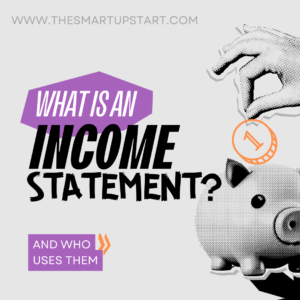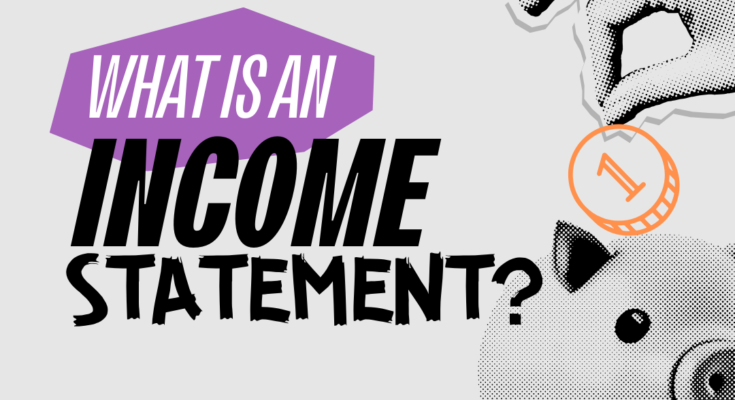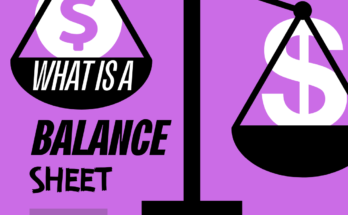Table of Contents
An income statement is one of a few important financial reporting documents used by both start-up and existing businesses. For start-up businesses, an income statement provides a roadmap to profitability. It uses the company’s revenue and expenses to determine if or when a company will be profitable. For existing businesses, an income statement can be used to identify revenue and expense trends and opportunities. Income statements are one of the three essential financial reporting documents, alongside the balance sheet and cash flow summary. This vital document provides a detailed overview of a company’s financial performance over a designated period, such as a month, quarter, or year. In this article, we will delve into what an income statement is, the types of companies that use them, and the reasons why they are indispensable for businesses of all sizes.
What is an Income Statement?
An income statement, also known as a profit and loss statement (P&L), is a financial report that summarizes a company’s revenues, costs, and expenses during a specific period. It highlights the company’s ability to generate profit by managing its resources efficiently.
Here are the key components of an income statement:

- Revenue (Income): The total earnings from the sale of goods or services before any expenses are deducted.
- Expenses: The costs incurred in the process of earning the revenue. These include operating expenses, cost of goods sold (COGS), interest paid, and depreciation of assets.
- Net Income (Profit or Loss): The final figure obtained after subtracting total expenses from total revenue. This indicates whether the company made a profit or incurred a loss during the period.
Detailed Breakdown:
- Cost of Goods Sold (COGS):
- Represents the direct costs attributable to the production of the goods sold by the company.
- Includes the cost of materials and direct labor involved in manufacturing the products.
- Operating Expenses:
- Encompasses all the costs associated with running the business, such as rent, utilities, wages, and marketing expenses.
- Interest Paid and Received:
- Shows the interest expenses on borrowed funds and the interest income from investments or savings.
- Depreciation:
- Reflects the reduction in value of the company’s assets over time due to wear and tear or obsolescence.
- Earnings Before Interest, Taxes, Depreciation, and Amortization (EBITDA):
- A measure of a company’s overall financial performance, excluding the effects of financing and accounting decisions.
- Net Income:
- Calculated by subtracting all expenses from total revenue. It is a crucial indicator of the company’s profitability.
What Types of Companies Use Income Statements?
Income statements are utilized by a diverse range of companies, irrespective of their size or industry. Here are some examples:
- Small Businesses:
- Retail stores, cafes, and service providers use income statements to track their profitability and financial health.
- Corporations:
- Large public and private corporations use these statements to report financial performance to shareholders and regulators.
- Startups:
- New businesses use income statements to monitor their financial progress, manage expenses, and attract investors.
- Non-Profit Organizations:
- Use a version of the income statement called a statement of activities to ensure efficient use of funds.
Why Do Companies Use Income Statements?
Income statements serve multiple critical functions for businesses:
- Revenue Analysis:
- Show where the company’s revenue comes from, enabling management to identify key income streams.
- Expense Tracking:
- Provide a detailed account of how the company spends money, covering expenses such as advertising, wages, and accounting fees.
- Financial Insight:
- Offer insights into the company’s expenses, helping identify opportunities for cost reduction and revenue growth.
- Profitability Assessment:
- Determine whether the company is profitable or operating at a loss, essential for making strategic business decisions.
- Investment and Financing Decisions:
- Help potential investors and lenders assess the company’s financial health and profitability, influencing investment and lending decisions.
Example:
Consider a tech startup that uses its income statement to attract investors. By analyzing the statement, potential investors can see the startup’s revenue growth, how much it spends on research and development, and its overall profitability. This transparency builds trust and confidence, increasing the likelihood of securing investment.
Income Statement Example:
Imagine a small bakery’s income statement for the first 2 years:
Year 1
- Revenue: $100,000
- COGS: $40,000
- Gross Profit: $60,000 (Revenue – COGS)
- Operating Expenses: $30,000 (rent, wages, utilities, etc.)
- Operating Income: $30,000 (Gross Profit – Operating Expenses)
- Interest Expenses: $2,000
- Depreciation: $3,000
- Net Income: $25,000 (Operating Income – Interest Expenses – Depreciation)
Year 2
- Revenue: $120,000
- COGS: $50,000
- Gross Profit: $70,000 (Revenue – COGS)
- Operating Expenses: $32,000 (rent, wages, utilities, etc.)
- Operating Income: $38,000 (Gross Profit – Operating Expenses)
- Interest Expenses: $2,000
- Depreciation: $3,000
- Net Income: $33,000 (Operating Income – Interest Expenses – Depreciation)
This income statement provides a clear picture of the bakery’s financial performance, showcasing how revenue is converted into net income. Using the example income statement for the small bakery, let’s explore how the information can be used to identify trends or opportunities for the business:
Identifying Trends and Opportunities:
1. Trend Analysis:
- Revenue Growth: By comparing the current year’s revenue to previous years, the bakery can identify trends in sales growth or decline. If revenue has been steadily increasing, it could indicate a growing customer base or successful marketing efforts.
- Cost of Goods Sold (COGS): Monitoring the percentage of COGS relative to revenue can help identify if ingredient costs are stable, increasing, or decreasing. A rising COGS percentage might indicate higher ingredient prices or inefficiencies in production.
- Operating Expenses: Analyzing trends in operating expenses can highlight areas where costs are increasing. For example, if utility costs are rising, the bakery could explore energy-saving measures.
2. Identifying Opportunities:
- Improving Gross Profit Margin: The bakery’s gross profit margin is 60% (Gross Profit of $60,000 / Revenue of $100,000). If this margin is lower compared to industry benchmarks, the bakery could explore opportunities to reduce COGS, such as negotiating better prices with suppliers or optimizing ingredient usage.
- Managing Operating Expenses: With operating expenses at $30,000, the bakery has an opportunity to scrutinize these costs. For example, if wages are a significant portion, the bakery could assess staffing efficiency or consider automation for repetitive tasks.
- Interest and Depreciation: The bakery has $2,000 in interest expenses and $3,000 in depreciation. Exploring options to refinance debt at a lower interest rate could reduce interest expenses. Additionally, evaluating the depreciation schedule and asset utilization could uncover opportunities for more efficient capital investments.
- Marketing and Sales: If the bakery has identified peak sales periods or successful promotions in past quarters, they can replicate and expand these efforts. Understanding which products or promotions drive the most revenue can help tailor future marketing strategies.
- Expansion Opportunities: With a net income of $25,000, the bakery has a solid profit base. The business can consider using a portion of this profit to invest in growth opportunities, such as opening a new location, expanding the product line, or enhancing the bakery’s online presence.
Actionable Steps:
- Revenue Analysis:
- Track monthly revenue to identify seasonal trends.
- Implement customer feedback mechanisms to understand preferences.
- COGS Optimization:
- Conduct a supplier review to negotiate better pricing.
- Implement inventory management practices to reduce waste.
- Expense Management:
- Review all operating expenses and identify areas for cost reduction.
- Invest in energy-efficient equipment to lower utility costs.
- Financial Planning:
- Use part of the net income to pay down high-interest debt.
- Create a depreciation schedule to plan for future capital expenditures.
By regularly analyzing the income statement and other financial metrics, the bakery can make informed decisions that drive profitability and support sustainable growth.
Conclusion
An income statement is an indispensable tool for any business, providing a clear and detailed overview of financial performance. By showing revenues, expenses, and net income, it helps businesses track profitability, manage expenses, and make informed financial decisions. Whether you run a small bakery, a tech startup, or a large corporation, understanding and utilizing income statements can pave the way for better financial health and business success.






It’s really a great and helpful piece oof information. I’m satisfied that you simply shared this useful information with us.
Please keep us up too date likke this. Thank yoou foor sharing. http://Boyarka-Inform.com/